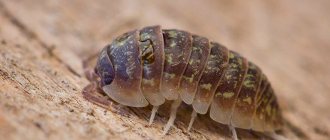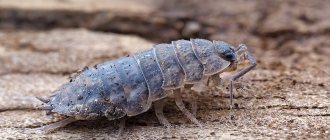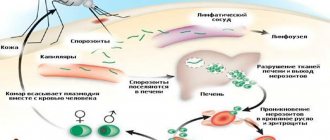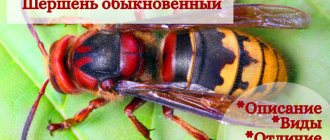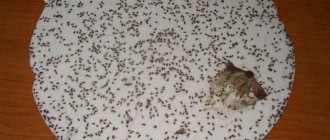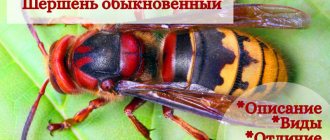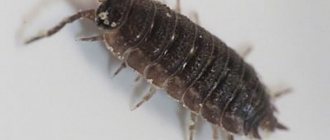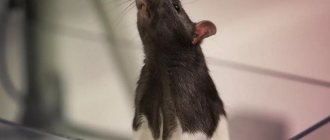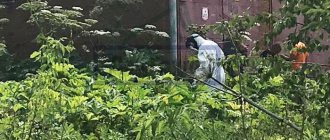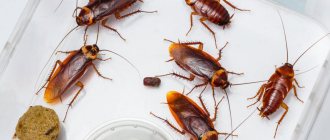The animal world is home to many parasites. They differ in size, habitat and danger to their host.
Many of them exist on the host for years, eating particles of skin, hair and sucking blood. Some are more dangerous, capable of crippling and even killing the host.
Tongue woodlice
Tongue woodlice is considered one of the most disgusting and unusual parasites, mainly living in the mouth of fish.
An unusual way of parasitism
Unusual creatures have always been of particular interest to researchers. In this regard, the tongue-eater woodlice is simply unique. No other living creature behaves this way.
The parasite finds a host literally in the first days of life. It enters the oral cavity through the gill slits or directly through the mouth. With the help of sharp claws, the arthropod attaches itself to the tongue, digs into it, and begins to suck out blood. At the same time, the fish does not show concern. However, at this stage it is too early to talk about anything unusual. Many parasites feed on the blood of their hosts.
The fun begins later. The fish's tongue gradually atrophies until, bloodless, it dies completely. But the woodlouse will not abandon the fish; it will show a kind of loyalty until the end of its life. Moreover, over time, the body of the woodlice completely takes over all the functions of the tongue it has destroyed. The fish does not feel discomfort, hunts, captures food and eats, as it did before meeting the parasite.
The arthropod does not pretend to prey on fish and continues to be content with little - blood and mucus. Probably, the saliva of woodlice contains painkillers, because the fish does not feel pain. Some species eventually stop consuming blood altogether, being content with mucus alone.
Scientists studying the lifestyle of these creatures have found that in nature there are no cases where a woodlice would leave its owner and find another. She will stay with the fish until she dies of old age. In rare cases, biologists find two woodlice in the mouth of large fish, which peacefully coexist side by side. Even in this case, the fish feels fine.
After the death of a woodlice, the fish's tongue does not recover. She has to adapt to doing without him and without the assistant who replaced him.
Features of the Tongue Cancer
There are many species of Cymothoa in nature, but only Cymothoaexigua (in English tongue-eatinglouse, which means tongue-eating louse) is capable of eating and replacing an organ.
The crustacean became known to the world because of its unique ability to parasitize the host’s body. Today this is the only creature capable of completely replacing an organ lost through its own fault. In appearance, it is very similar to woodlice, which grow in damp basements, attics and in the apartments themselves. A distinctive feature of the crustacean is its milky body.
Tongue woodlice
The parasite chooses the pink snapper, which lives off the coast of California, as its victim. Entering the fish's mouth through the gills, the small crustacean instantly attaches to the tongue using special claws. At the initial stage of parasitism, the main source of nutrition for the pest is blood sucked from the tongue.
Gradually becoming bloodless, the organ completely atrophies over time. However, the fish does not die; from this moment on, the role of the tongue begins to be played by the “settler” himself. Many people will think that in this way the crustacean will absorb all the host’s prey. However, this is far from true: the woodlice continues to live in the fish without interfering with its nutrition. All food consumed by the prey passes by the crustacean. The animal partially drinks the blood of the victim and is content with fish mucus, without causing much damage or discomfort to it. According to scientists, the snapper uses the services of the parasite without even knowing about the substitution.
Appearance
The tongue-eating woodlouse looks like most members of the family. It has an elongated, slightly flattened, segmented body, similar to a cocoon, equipped with several pairs of small limbs. In front, a small head with a pair of dark eyes peeks out from under the shell. Upon closer inspection, you can detect the oral apparatus.
Woodlice are white or yellowish in color.
Reproduction
No less amazing is the reproduction of tongue-eating woodlice. A small male enters the body of the fish. Gradually he transforms into a female. Then everything happens according to a simple scenario. The male enters the fish's mouth, finds a living female there, and mating occurs.
Interesting!
If the prey is large, the male may remain living with the female in the mouth of one owner, but this rarely happens. A fisherman who catches an infected fish will remember this encounter for the rest of his life. Opening his mouth slightly to remove the hook, the fisherman will see small creatures with black round eyes. You will definitely want to eat such prey.
After mating, the female lays eggs in a special pouch on her abdomen. After their birth, the cubs immediately leave the fish’s mouth, look for a host, and develop independently away from the female.
Woodlice eating tongue
Tongue-eating woodlouse in cinema
This unusual parasite has attracted the attention of filmmakers. In 2012, the American horror film “The Bay” premiered, the plot of which revolves around a tongue-eating parasite. As conceived by the authors, the action takes place in a bay into which industrial waste is dumped. Environmental pollution caused mutations, and woodlice became dangerous to people. Tongue eaters no longer hunt fish, they are interested in larger game. The effect is enhanced by footage shot on an amateur camera - they make the film more realistic.
Are woodlice dangerous for people?
It is believed that tongue lice cannot harm humans. But in theory, if someone tries to eat the infected fish, the creepy creature might bite them. These creatures are truly dangerous only in the 2012 American horror film The Bay. According to the plot, under the influence of waste from a poultry farm, tongue lice begin to mutate and turn into 20-centimeter monsters. Not a giant, of course, but this was quite enough for him to begin to pose a mortal danger to people.
Trailer for the film "The Bay"
If you are interested in science and technology news, subscribe to our channel in Yandex.Zen. There you will find articles that were not published on the site!
As you can see, some parasites may not cause much harm to their hosts. And some of them can even give them youth and a carefree life. I recently talked about how some ants bring parasite-infested food into their home, after which they gain something like “eternal youth.” But for a carefree life, they ultimately pay with their lives. If interested, read this material.
Danger to humans
Can history repeat itself in real life? Scientists assure that there is nothing to fear. The tongue-eating Cancer is only interested in fish. In addition, it can only live in an aquatic environment.
However, the insidious woodlice may well dig into your finger in defense. Its bites are not dangerous, but quite painful. And there is nothing pleasant in such an acquaintance. Agree, finding such a whitish surprise with eyes in the mouth of a caught fish can be a real shock. By the way, if a similar incident happens to you while fishing, you should not throw away the fish - it is suitable for food. But it is better not to remove the parasite from the fish’s mouth with bare hands. Fortunately, such creatures are not found in our reservoirs.
Coelacanth.
The coelacanth, or coelacanth, is a large deep-sea fish whose discovery in 1938 became one of the most important zoological discoveries of the 20th century. Despite its unattractive appearance, it is remarkable in that for 400 million years it has not changed its appearance and body structure. In fact, this unique relict fish is one of the oldest living creatures on planet Earth. She's even older than dinosaurs! Coelacanth lives at a depth of up to 700 meters in the waters of the Indian Ocean. The length of the fish can reach 1.8 meters and weigh more than 100 kilograms, and the body has a beautiful blue tint. Since coelacanth is very slow, it prefers to hunt at great depths, where there is no competition with faster predators. These fish can swim backwards or belly up. Despite the fact that the meat of the coelcanth is inedible, it often becomes a desired prey among local poachers. Currently, the coelacanth or coelacanth is endangered.
Are fish capable of communication?
A separate question is whether fish have a language that serves as a means of mutual exchange of information. And here “silent” creatures are able to surprise the uninitiated. In addition to non-verbal means inherent in all living beings (in fish, these are color and its changes, body gestures, manner of movement, smells and gland secretions), they have a wide range of sound signals, clearly audible even to humans and very different for different species.
For example, the signals of a mullet are similar to the clicking of a horse, and the horse mackerel makes sounds characteristic of a dog. The trigla is recognized as the most talkative - it practically does not shut up, sometimes grumbling, sometimes croaking.
Research has shown that all fish speak differently. Different species and individuals differ in the degree of talkativeness, just like people. However, part of their “speech” is outside the frequency range perceived by the human ear. Basically, underwater inhabitants give each other signals about a threat, the presence of food in a particular place, and report their location and direction of travel.
What prevents fish from speaking in the traditional sense when they have a tongue in their mouth? The absence of other important parts of the speech apparatus, namely the larynx and pharynx. They also lack vocal cords and moving lips.
There are widespread myths about fish’s lack of memory, the ability to think and, of course, the inability to make sounds. This gave rise to the allegorical name “fish language” for the communication system of the deaf and dumb. Another comparison is due to the veiled content of statements - “fish language” is sometimes called thieves’ jargon.
Skillful fisherman.
Lasiognathus is a genus of deep-sea ray-finned fish of the Thaumatichthidae family, found in the Pacific and Atlantic oceans. Among ichthyologists it is known under the unofficial name “skillful fisherman”. Lasiognathus received its nickname for a reason. This deep-sea fish has an almost real fishing rod, with which it hunts other fish and invertebrates. This device consists of a short fishing rod (basal bone), fishing line (modified dorsal fin ray), hook (large skin teeth) and bait (luminous photophores). This gear is truly remarkable. In different subspecies of Lasoignatus, the structure of the fishing rod can vary from short (up to the middle of the body) to long (much longer than the body). These fish live at great depths - about 4 kilometers.
Zombies among animals: wasp wasp, woodlice sucker and fungus that causes suicide in ants
Movies about zombies scare us because it is almost impossible to escape infection. The corpses with empty eyes and foaming saliva are somewhat reminiscent of those infected with the rabies virus. But this virus is actually a parasite that manipulates the host's behavior for its own purposes. It also causes aggression in the infected person in order to force him to spread the virus through bites. But not only viruses do this, but also quite tangible organisms - insects, fungi, worms and crustaceans.
Climb to explode
Caterpillars can be considered champions in the number of microorganisms and insects that control their minds.
The “zombie virus” is a baculovirus microorganism that sends caterpillars from Lancashire in north-west England to certain death. It blocks the caterpillars' natural aversion to sunlight, forcing them to climb to the tops of plants, where they quickly die. Moreover, the baculovirus literally explodes from the corpse of its host to enter the body of a new victim.
The virus infected the caterpillars of oak eggar, a common moth found in many heaths and grasslands across the British Isles. The discovery was made when scientists began to notice too often the skins of dead caterpillars hanging from the tops of bushes in the Winmarley Moss Nature Reserve in the city of Hastang.
Healthy caterpillar
Similar observations have been noted by scientists throughout the region. According to Dr Miller, who led the study into this strange phenomenon, it is completely unusual for these caterpillars to climb tall bushes and be exposed to the sun because the heather and blueberries they feed on are away from sunlight. Researchers have found that baculovirus alters insects' response to light early in infection. In later stages, the parasite turns its host into a zombie-like creature, forcing it to feed continuously before ascending to higher, more open areas. The virus actively reproduces in almost every cell of the caterpillar's body. When a caterpillar dies, it undergoes a natural decomposition process in which its exoskeleton disintegrates. Each part of the caterpillar contains a baculovirus.
Horse killing riders
Some species of parasitic wasps of the Glyptapaneteles species, which are also called “ichneumon wasps,” lay their eggs in the bodies of other insects, for example, in the caterpillars already described above. The parasitic wasp injects about 80 eggs into the host at a time, along with a poly-DNA virus and a small amount of poison, which paralyzes the caterpillar until the wasp lays eggs. The virus helps them suppress the host’s immune system so that it fully adapts to the function of growing larvae and does not turn into a pupa. After numerous studies, entomologists came to the conclusion that wasp toxins contain a special virus, or more precisely, nudivirus (virus-like particles - Hi-Tech), which helps wasps suppress the immune system of caterpillars. It is produced in the ovaries of a wasp.
Scientists believe that the genes that control the formation of these particles were acquired by the ancestors of wasps from a real virus, which was integrated into their genome 100 million years ago.
Caterpillar of the Thyrinteina leucocerae butterfly with Glyptapanteles pupae
The hatched larvae grow and develop inside the unfortunate victim, feeding on its lymph without injuring the internal organs. After which the caterpillars leave the body, attach themselves to a leaf nearby and pupate. But two or three larvae remain inside to control the caterpillar. Under such control, instead of continuing its development, it remains in place and selflessly protects foreign larvae from other insects. When young riders are born, she dies.
Darwin believed that the existence of organisms such as Glyptapanteles contradicted one of the central tenets of natural theology, which views the study of nature as a way to demonstrate the benevolence of God. He could not convince himself that God could create insects that feed on the bodies of living caterpillars.
Riders treat spiders no less horribly. If the arachnid is unlucky, it will become a carrier of the larva, and it will feed on its blood for two weeks. At the same time, the spider, suspecting nothing, will live its former life. But the time will come when the larva will need to pupate, and then it will inject a special neurotoxin into the spider’s brain, which will force it to weave an unusual web. When the job is complete, the larva will eat the spider and use the web to pupate.
A species of parasitic flatworm, Leucochloridium paradoxum, invades the snail and develops in its body. A larva emerges from the eggs and emerges from the eye tentacles of its victim in the form of a bright growth. A blind snail loses its vigilance and no longer hides from danger. Birds can easily spot prey thanks to these new, bright “eyes.” This is how Leucochloridium paradoxum achieves its goal - it enters a new organism, where it lays its eggs. Together with the droppings, they end up in the grass, where a new cycle of their life begins.
Bloodthirsty mushrooms
A species of entomopathogenic fungus, Ophiocordyceps unatellis, modifies the behavior of ants to ensure that their spores are distributed as widely as possible. Translated, the name of the parasite sounds like “one-sided Cordyceps.” This fungus enters the ant's body through the respiratory openings, where it begins to feed on soft tissues. The enslaved ant is forced to leave its nest for a more humid microclimate favorable to the growth of the fungus. The ant eventually climbs to the top of the low bush and bites into the stem with its jaws. Then the mushroom kills the unfortunate man and eats his body. Thanks to this, a few days after the ant's death, the fungus releases a fruiting body through the base of the ant's head, turning its corpse into a launch pad from which it can release its spores and infect new insects.
Stages of ant infection with the fungus Ophiocordyceps unatellis
A study published in 2022 showed that the commonly held belief that the fungus affects the ant's central nervous system is wrong. The brain of zombie ants remains untouched by the parasite, and O. unatellis is able to control the actions of its host by penetrating and surrounding muscle fibers throughout the ant's body. Essentially, it turns the infected ant into an external version of itself. Thus, zombie ants remain partly insects, but, on the other hand, become a fungus.
Other entomopathogenic fungi Entomophthora muscae, which means “fly killer” in Greek, enters the exoskeleton of flies through one of the many cracks in their “armor.” The first thing the mushroom does is grow into a specific area of the brain that controls the behavior of the fly, causing it to land on a nearby surface and crawl as high as possible. Infected flies rise to a certain height, attach themselves to any plant and take a “death pose” with their belly up, optimal for dispersing spores. Eventually, the fungal cells infect the fly's entire body and it dies.
To make this discovery, Penn State scientist David Hughes assembled an international team of entomologists, geneticists, computer scientists and microbiologists. The goal of the study was to look at the cellular interactions between O. unatellis and Camponotus castaneus ants during a critical stage of the parasite's life cycle—the phase when the ant anchors itself to the bottom of a leaf with its powerful mandibles (jaws).
Using electron microscopes, the researchers created 3D models to determine the location, abundance and activity of the fungi inside the ants' bodies. The tissue pieces were sampled at 50 nm resolution, using a machine that could repeat the slicing and imaging process at 2,000 frames per minute over a 24-hour period. To analyze this huge amount of data, the researchers turned to artificial intelligence, and a machine learning algorithm learned to distinguish between fungal and ant cells. This allowed the researchers to determine how much of the insects' bodies could still be considered an ant and how many of them had already been transformed into a fungus. O. unatellis cells have spread throughout the ant's body, from the head and thorax to the abdomen and legs. Moreover, all these fungal cells were interconnected, creating a kind of collective biological network that controlled the behavior of the ants.
Typically in animals, behavior is controlled by the brain, which sends signals to the muscles, but the study showed that the parasite controls the host's behavior without entering the head like a puppeteer.
Corpse of an ant with mushrooms protruding from its body
The study showed that the fungus secretes tissue-specific metabolites and causes changes in host gene expression, as well as atrophy of the ant's lower jaw muscles. Altered host behavior is an extended phenotype of microbial parasite genes that is expressed through the host. But it is still unknown how the fungus achieves complete control over the behavior of its victim.
Cymothoa exigua is a unique parasite that not only eats parts of its host's body, but also completely replaces what it eats. The woodlouse penetrates the gills and settles into the body of the fish, the spotted pink snapper. She eats the tongue of her victim, and then begins to feed on mucus and, however, regularly “works” instead of the tongue. Currently, it is believed that Symothoa exigua does not pose a threat to humans. However, some researchers argue that there is still a risk of being bitten.
Woodlice, which replaced the fish's tongue
The woodlice that turns crabs into nannies
Sacculina is a parasitic arthropod from the crustacean subphylum. He really enjoys managing the crabs. Sacculina larvae are planktonic organisms that travel through salty seas and oceans. Four to five days after birth, females begin to develop a small chitinous shell (cyprisoid stage). From this moment on, the sacculina has only one goal - to quickly find a suitable crab, gain a foothold on it and calmly develop further. Most often, sacculina is attached to the claws.
There the larvae turn into a kind of living hypodermic syringe (the so-called “kentrogon”). He pierces the shell at the base of the crab's bristly hairs and introduces the next stage of the parasite, a microscopic blob called a vermigon, into the crab's blood and digestive tract. Essentially, sacculina injects itself in liquid form. After being introduced into the shell, its active growth stage begins. The shapeless lump of cells grows greatly and reaches a size of up to 3 cm. Sacculina sucks out all the nutrients from the crab, but does not kill it. The parasite turns him into an obedient zombie under complete control. Sacculina also destroys the crab's genitals, and also changes the hormonal levels of males to make them obedient and caring mothers.
Mechanism of crab infection with sacculina
The body of a fully mature sacculina is made up of parts called internodes, which look more like the roots of a plant than an animal. Its antennae spread throughout the crab's insides, and only part of the parasite is visible from the outside - the female reproductive organ, which protrudes from the abdomen. At this sac-like stage, sacculina becomes sexually mature. At the point of attachment to the abdomen, a tiny hole opens through which the male enters the sacculina, which looks like the female larva before inserting into the crab. It attaches itself to it and remains for the rest of the crab's life, producing sperm and fertilizing eggs daily. Moreover, each female sacculina has two entrance channels in which two males can live simultaneously.
Sacculina lays fertilized eggs where a healthy female crab would carry her own clutch. And the unfortunate crustacean takes care of her in the same way as she would take care of her offspring. A crab, zombified by sacculina, obediently cleans its clutch of algae and protects it from predators and other parasites. It is surprising that such crabs live longer than uninfected ones.
Some experts say the so-called chronic wasting disease, which affects deer and elk in 24 U.S. states and two Canadian provinces, could infect humans in the future like something out of a zombie apocalypse.
The virus itself affects the animal's brain, spinal cord and tissues, causing aggression, loss of concentration, drooling, lack of fear of people and lethargy. This phenomenon has become a topic of conversation lately as it continues to spread across North America. Most likely, this is just a mutated rabies virus, but the disease has not been fully studied.
Beautiful and deadly
Nature created the emerald wasp, which turns cockroaches into zombies. A female wasp mates only once in her life. After mating with dozens of fertilized eggs, the wasp searches for the cockroach using sight and sound and then attacks.
But cockroaches are six or more times larger than wasps, so the accuracy of the sting strikes is extremely important. The wasp stings the cockroach in the chest and injects gamma-aminobutyric acid with taurine and beta-alanine. GABA is a neurotransmitter that blocks the transmission of motor signals between nerves and, along with two other chemicals, temporarily paralyzes the cockroach's front legs.
Wasp and cockroach fight
She then injects a sting containing a toxin into two areas of the cockroach's brain, the ganglia. The wasp uses special sensory organs at the tip of its stinger to locate the exact areas of the cockroach ganglia to attack. Once the venom is activated, the victim's entire central nervous system becomes controlled as it blocks key signals to the brain. This causes the victim to lose the sense of self-preservation, so that the wasp, being too small to carry the cockroach, leads it, like a dog on a leash, to its nest, where it lays an egg in the insect's stomach and seals it inside, and then flies off to find a new victim.
After two days, the wasp egg hatches and the newborn larva begins to destroy the cockroach. The larvae feed on hemolymph, which contains nutrients equivalent to human blood. They also consume all the organs in the abdominal cavity while the cockroach is still alive. Once all the organs are eaten, the larva consumes the cockroach's nervous system and deposits an antimicrobial secretion on the inner walls of the cockroach's corpse. Over the next month, the larva turns into a pupa inside the cockroach's corpse and, reaching the next stage of development, breaks through its shell and climbs out.
Zombies are not just horror movie props; they are common in nature, whether we like it or not. There are many examples of mind control parasites that can attack the host's nervous system, enslaving their victims in the most twisted ways. Is it possible that these mechanisms will also apply to humans? We are also just a biological species, one in a million, so zombification can affect us too.
The tongue as part of the fish's body
For most, this organ is present and is part of the digestive system, and often an assistant in catching future food and one of the many places on the fish’s body where taste buds are located. The size, shape and capabilities of this organ are different, as are the representatives of this group of animals themselves, which includes tens of thousands of species.
However, there are representatives deprived of such an evolutionary tool, but they too have adapted and found an opportunity to implement the functions of language in practice differently. For example, the mudskipper, which often hunts in the air, transferred similar mechanisms from the water element.
In a situation typical for most fish, the tongue draws in water and food along with it. Coming to land, the fish takes water into its mouth and, seeing prey, spits out the liquid in parts, and then sucks it back along with the food. And in this case, it is not so important whether the fish have a tongue - photo and video observations have proven that even in the absence of this part of the body, the fish are not going to remain hungry.
